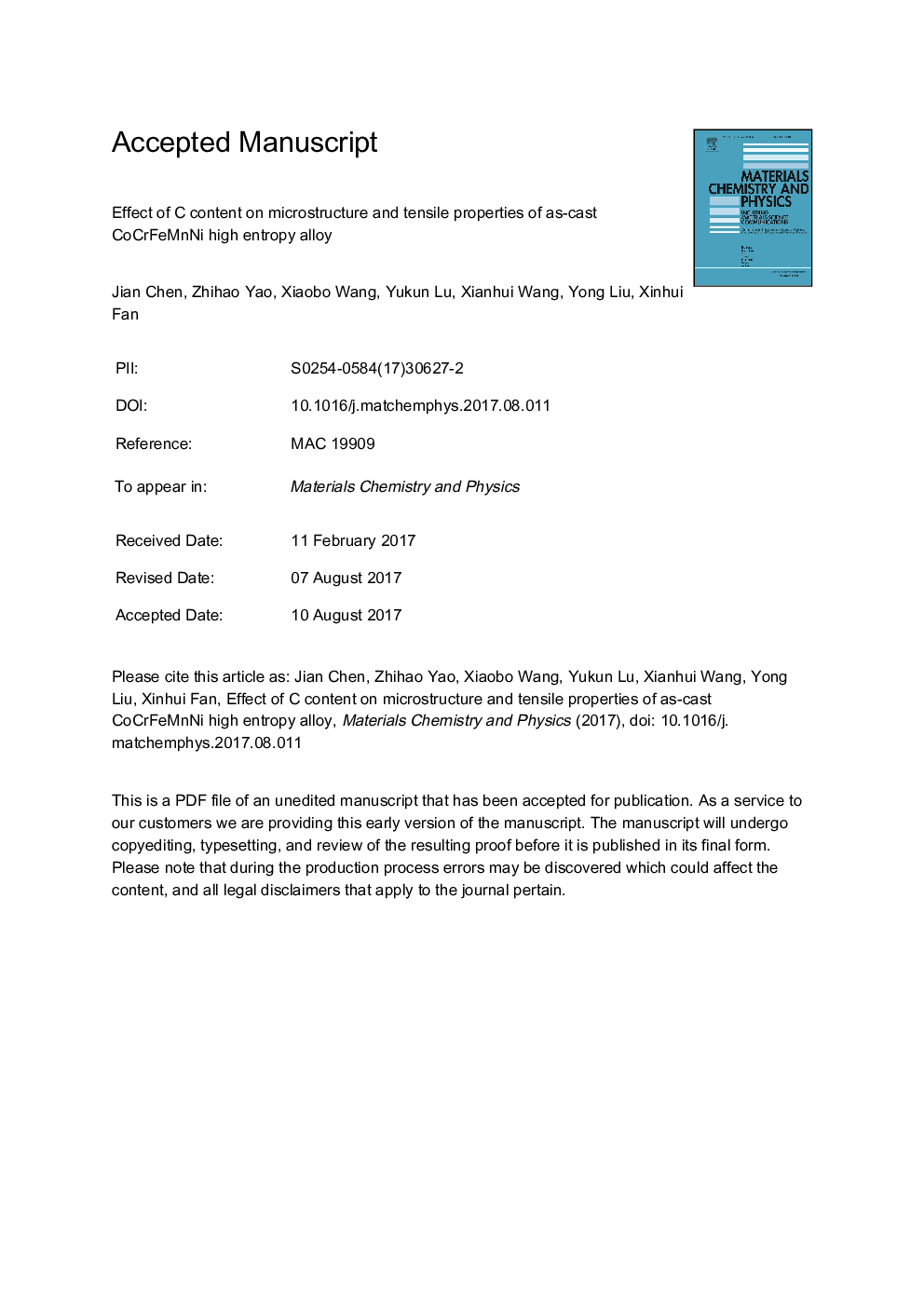| Article ID | Journal | Published Year | Pages | File Type |
|---|---|---|---|---|
| 7921913 | Materials Chemistry and Physics | 2018 | 28 Pages |
Abstract
The as-cast CoCrFeNiMnCx (x = 0, 0.05, 0.1, 1.5 and 2.0) alloys were prepared in a vacuum arc furnace. The microstructure and phase constituents were characterized by scanning electron microscopy, X-ray diffraction and transmission electron microscopy, and the tensile properties were tested as well. The results show that the CoCrFeNiMn and CoCrFeNiMnC0.05 alloys have a single phase FCC structure. When the carbon concentration is beyond 0.1 (x = 0.1, 1.5 and 2.0), the M7C3 carbide generates in the interdendritic regions and at the grain boundaries. Minor C addition can trigger a transition from dislocation glide dominated plasticity to a mixed deformation mode consisting of dislocation glide and twining, which increases the strength and ductility of the CoCrFeNiMnC0.05 alloy compared with the CoCrFeNiMn alloy. The CoCrFeNiMnC0.05 and CoCrFeNiMnC0.1 alloys have a typical lamellar pattern on the fracture surface due to the formation of columnar grains and the segregation of C at the grain boundaries. The alloys become stronger with the increase of carbon concentration, but at x > 0.1, the ductility decreases and the CoCrFeNiMnC0.15 and CoCrFeNiMnC0.2 alloys present a quasi-cleavage fracture mode.
Related Topics
Physical Sciences and Engineering
Materials Science
Electronic, Optical and Magnetic Materials
Authors
Jian Chen, Zhihao Yao, Xiaobo Wang, Yukun Lu, Xianhui Wang, Yong Liu, Xinhui Fan,
